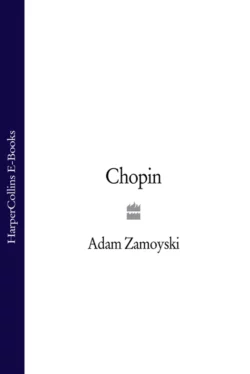Chopin

Adam Zamoyski
Тип: электронная книга
Жанр: Музыка
Язык: на английском языке
Стоимость: 1163.25 ₽
Статус: В продаже
Издательство: HarperCollins
Дата публикации: 16.04.2024
Отзывы: Пока нет Добавить отзыв
О книге: The definitive biography of Chopin by one of the finest of contemporary European historians.Two centuries have passed since Chopin’s birth, yet his legacy is all around us today. The quiet revolution he wrought influenced the development of Western music profoundly, and he is still among the most widely studied and revered composers. For many, he is the object of a cult. Yet most people know little of his life, of the man, his thoughts and his feelings; his public image is a sugary blur of sentimentality and melodrama.Adam Zamoyski cuts through the myths and legends to tell the story of Chopin’s life, and to reveal all that can be discovered about him as a person. He pays particular attention to recent revelations about the composer′s health, and places him within the intellectual and spiritual environment of his day.